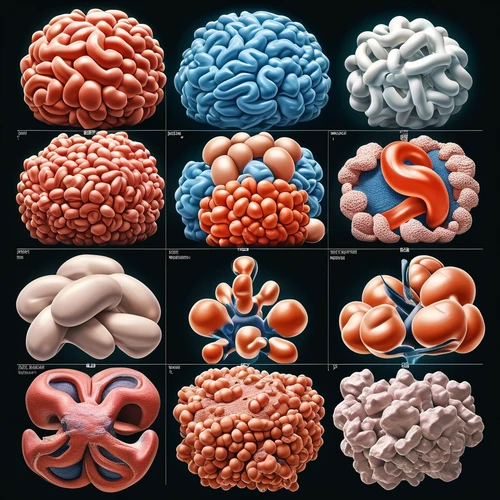A collaborative team from multiple institutions, led by the Chinese Academy of Sciences, has created a proteomic map revealing how aging impacts 13 different human organs. The study unmasks unique aging patterns in each tissue, identifies factors that may contribute to systemic decline during aging, and observes decoupling between transcriptomes and proteomes.
Aging and deterioration vary by organ, increasing susceptibility to chronic diseases. Prior research primarily focused on plasma proteins or DNA methylation, without examining how protein control mechanisms degrade differently among tissues to identify specific biological age biomarkers for each organ.
In "Comprehensive human proteome profiles across a 50-year lifespan reveal aging trajectories and signatures," researchers conducted multi-tissue proteomic analyses, charting the dynamics of protein changes and relevant biomarkers over five decades of adulthood.
CellProteins were quantified across various body systems using advanced techniques in 76 individuals aged 14 to 68. A total of 516 tissue samples and plasma extracts were analyzed, revealing more than 12,700 proteins with a significant concentration in intracellular regions like nuclei and mitochondria.
An intriguing finding was the divergence between mRNA and protein levels across all tissues, especially in spleen, lymph nodes, and muscle. This includes declines in critical cellular machinery involved in protein synthesis, folding, and degradation. Accumulation of amyloid proteins was observed alongside immunoglobulins and complement factors, forming an axis that connects misfolded proteins to immune response activation.
A specific set of 29 proteins rose consistently across various tissues, while another group of 31 proteins declined uniformly with age. Proteomic clocks were constructed using elastic net regression for nine organs, revealing midlife aging patterns between ages 45 and 55.
Secreted proteins analysis identified various chemokine and adhesion molecules that intensify tissue interactions as aging progresses. These factors include CXCL12 and GAS6, which contribute to systemic aging by inducing senescence markers and impairing vascular function in humans and mice experiments.
To support their research, the authors note: Cell
Researchers employed ligand-receptor mapping of plasma proteins, identifying 24 critical communication pairs that highlight the aorta as a central driver of systemic aging. Multiple vascular factors were identified as molecular aging agents across organs.
The study provides valuable insights into proteomic biomarkers associated with aging in different tissues and underscores how protein-secreted elements can influence organ-wide senescence processes.
Written for you by our author Justin Jackson, edited by Sadie Harley, and fact-checked and reviewed by Robert Egan—this article is the result of careful human work. We rely on readers like you to keep independent science journalism alive. If this reporting matters to you, please consider a donation (especially monthly). You'll get an ad-free account as a thank-you. ad-free

